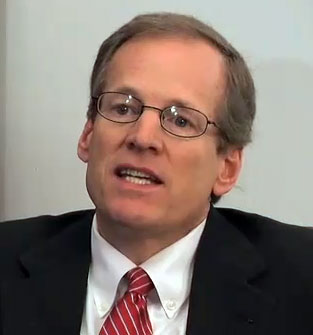 Cross-posted from The Urbanophile.
Cross-posted from The Urbanophile.
I recently had the privilege of seeing Jan Gehl, godfather of Copenhagen’s bicycle network and a consultant to New York City and many others, speak. He was beyond awesome, but one thing that really stuck with me was how he got the tone completely right. One of his observations about how they transformed Copenhagen was, “We never talked about taking away things from people. We only talked about what they were going to get.”
This is a lesson too seldom heeded by urbanists, who almost seem to define themselves as much in terms of what they are against as in terms of what they are for. The anti-car rhetoric immediately comes to mind. All these urbanist things we want to do are talked about in terms of cars all the time. But what’s that got to do with it? If these are good policies, and have all sorts of benefits for citizens, why can’t we talk about that? Why don’t we defend our proposals on their own merits?
Carol Coletta of CEOs for Cities has a great saying that “eat your spinach” marketing doesn’t work. Coletta’s group has been working for a while now to try to create a new vision of the American dream, one rooted in a more urban context — a vision that would do for the city lifestyle what the GM Futurama exhibit did for the suburban, auto-based one. It’s a hugely important initiative, and one that we should all seek to emulate.
Moving beyond sustainability
Nothing has done more to hurt the urbanist cause than it becoming almost inseparably linked to the notion of “sustainability” and climate change. Sustainability has become almost a shibboleth of the right-thinking urbanist. Architects, planners, politicians, journalists, and more all try to outdo each other with ever more rhetoric about radical transformations and grandiose, even-science fictiony visions of the future low-carbon world. These might score points with the inside crowd, but they don’t impress the average member of the public all that much. Quite the opposite, in many cases.
Right now in America, millions of people are out of work. The Bureau of Labor Statistics has had to invent new categories of long-term unemployment to measure the scale of the problem. Ben Bernanke just said it might be five years before employment normalizes. More than 43 million people — one out of every seven in America — are on food stamps. That’s about the population of the entire country of Spain. State and local governments are broke. Our local social safety nets are getting shredded as they cut back. The federal government is drowning in debt. Millions of people are or soon will be in foreclosure. Many more are underwater on their homes. People are hurting out there.
Against this backdrop, it should come as no surprise that Americans have roundly shown that they ain’t buyin’ it on cap-and-trade or other measures of sustainability. Apocalyptic but nebulous risks like climate change seldom resonate even in normal times. But especially with everything going on in America right now, it’s just not on the list. We might not like that, but that doesn’t make it any less true. It’s like Julian Simon put it: “No food, one problem. Much food, many problems.” Climate change is the concern of people who aren’t worried about where their next paycheck is coming from, where they are going to live after they lose their house, or how they are going to feed their kids.
Bill Clinton was right: It’s the economy, stupid. Urbanists prattle on about sustainability all the time as if the last few years didn’t even happen. No wonder it’s not working. And because pretty much all urbanist policies have been sold on sustainability, there’s a linkage in the public’s mind, so that if they don’t believe in climate change or don’t rate it highly in favor of more immediate concerns, that takes urbanism down with it.
The good news is, it doesn’t have to be that way. With better packaging, I believe there is a case for pro-urbanist policies — one that can work with the times and the trends instead of against them. Some people will never be converted. But I’m convinced there are a lot more people who would be open to various environmental and urbanist ideas if we talked about their practical benefits rather than how they are good for the planet (even if they are).
Delinking conservation from sustainability
Back in the early 1980’s my father ran a freon packaging plant. They took in bulk freon in rail cars and put it into smaller cylinders for the marketplace. When he came in, a lot of excess freon from the packaging process was simply blown off into the atmosphere. Now, my dad’s not exactly a staunch environmentalist, nor was the ozone hole even on the radar then. But he calculated how much money they were losing from wasting all that product, and decided to install recapture equipment to eliminate the blow-off. It didn’t require any environmental consciousness. Eliminating waste was simply good business.
Similarly, at my old company, we talked about sustainability a lot. But what we talked about a lot more was cutting costs. Reducing our office space footprint, encouraging telecommuting, going paperless where possible, installing high end “telepresence” videoconferencing to reduce executive travel — all reduced the firm’s environmental footprint a lot. But they also saved beaucoup dollars for the shareholders.
In an era of belt-tightening, why not play up the money-saving angle of conservation? After all, wasting all this stuff costs a lot money — money many of us don’t have. There’s a real business case to be made here.
If I were mayor of a city, I’d be targeting my green message not at the sustainability-urbanist axis, but the taxpayers, making sure they know how much money I’m saving them. That’s the kind of green that resonates with them right now.
New York’s positive livability message
When it comes to transportation policy and urban livability, New York City is setting the bar from a policy and action perspective. But they’re also doing it from a communications standpoint. I’ll show here again this great video on New York’s quality of life agenda.
Mayor Michael Bloomberg, Janette Sadik-Khan, and others don’t bury their environmental goals in the sand. She says the goal is to make New York “the greatest, greenest city in the world,” and they do talk about taking space away from cars.
But the clear focus is the benefit to New Yorkers. Not only is the imagery great, so are the talking points, stressing quality of life– “We really try to focus on things that improve the quality of our lives today” (Bloomberg) — safety (traffic fatalities down 20 percent since PlaNYC released, pedestrian safety improved by 60 percent in Times Square since closing Broadway), better services (reduced bus boarding times, faster bus speeds), the benefits to business — “Our agenda is to unclog our streets so commerce doesn’t get stifled” (Bloomberg), and the fact that businesses are pleased (sales are up) now that Times Square has been reconfigured — and the inclusive nature of the improvements — “It’s not just for the spandexed and the brave. It’s for moms, dads, kids, everyone” (bike planner).
A recent article on Sadik-Khan in the Guardian reinforces the messaging:
Congestion — sclerotic city arteries clogged with traffic — is economically inefficient, ergo making mass transit work serves the city’s economy. S
ince 96 percent of Wall Street’s workforce goes to the office by subway, bus, boat, bike, or on foot, keeping the city moving and making it prosperous are of a piece … “The goal has been moving as many people as possible as quickly as possible — and safely,” she says. “Re-engineering streets is about re-imagining streetscapes, but it’s also about making streets safer.” … “What we’ve found is that we’ve not only achieved a 50 percent reduction in cyclist injuries where we have these lanes, but a 40 percent cut in all injuries because of the pedestrian refuge islands,” she says.
More good marketing messages
New York isn’t alone in spreading the good news about practical benefits of these policies. If you ever get to hear Washington, D.C. planning chief Harriet Tregoning talk, she’s got a ton of evidence about how that city’s approach has paid off. For example, even during the recession, D.C. sales tax collections have been going up. Now, obviously in the nation’s capital there are always unique dynamics, but that blows me away.
Tregoning’s also been working hard to marshal statistics to help make business even better. For example, a lot of national retailers rely on traffic counts to decide where to locate stores. But in the city, there may be huge numbers of people passing by on foot or in buses that aren’t getting picked up by that measure. So they are working diligently to find ways to gather data to give a more accurate picture of demand to retailers. That’s the intersection of urbanism and business.
There are also sorts of fiscal benefits that can be talked up. As I like to say, “less lanes is less money.” Why spend money on more concrete for cars than you actually need by over-designing for peak of the peak and such?
I was also stunned to read in Streetsblog that all New York’s current bicycle initiatives combined only cost $8.8 million — and only $2 million of that came from the city’s budget. As bike commuting has doubled since 2006, albeit on a low base, it’s tough to imagine any expenditure that could be more cost efficient or have a higher return on investment than that.
Let’s face it, most municipalities and states are broke right now. Low-cost, fast, high-impact changes like NYC’s public plaza program and pedestrian/bike improvements are clearly the way to go. We can’t afford anything else. In the short term especially, the pedestrian and bicycle need to be at the core of the transport policy for any city that hopes to have a fiscal future.
There’s a lot more where this came from. I think this is the type of thing that needs to inform our arguments to a much great extent going forward. As Jarrett Walker said over at Human Transit, let’s not talk about “coercion”. Let’s stop talking about what we want people to give up, and about how we have to do this or that to “save the planet.” Instead, let’s talk about why it’s just plain a good idea to do anyway. Let’s defend our policy prescriptions on their own merits — because I’m convinced they can stand on their own two feet.
More goodness from Munich
I’ll leave you with another video. Copenhagenize pointed me at this video out of Munich, talking about marketing bicycling to help build the bicycle culture in that city. They want to produce something that inspires an emotional connection, that gets people to experience the “joy of cycling.” Marketing isn’t all just about dry facts and figures, though that’s what I stressed in this post. This short piece talks about how Munich developed their sales approach.



